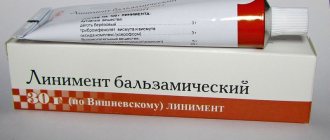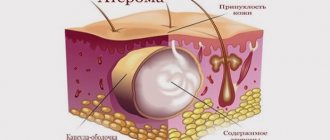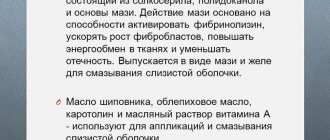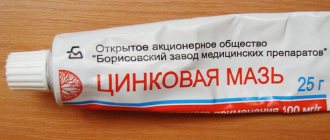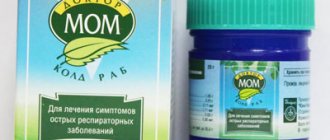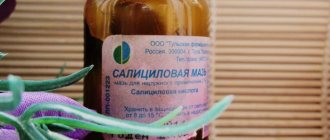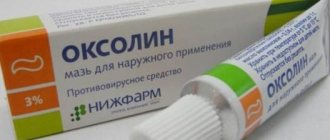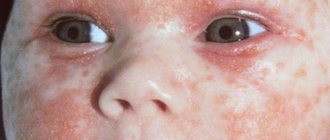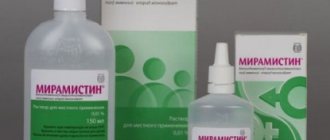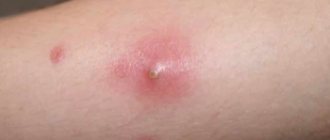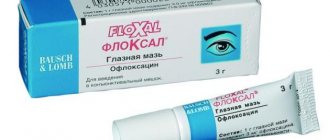From this article you will learn:
- Is retinoic ointment effective for wrinkles?
- retinoic ointment for wrinkles - reviews from doctors and patients.
Retinoic ointment belongs to the group of topical retinoids. Its main active ingredient is Isotretinoin (13-cis-retinoic acid), which is, in principle, one of the most effective forms of vitamin A for reducing the depth of wrinkles.
Thus, the effectiveness of Isotretinoin significantly exceeds the effects of using most other forms of vitamin A. Everyone has heard about cosmetics with retinol, retinaldehyde, as well as retinol acetate - all of these are forms of vitamin A that are different in effectiveness. Compared with isotretinoin, a stronger anti-aging effect on The skin is treated only with a retinoid such as Tretinoin (retinoic acid).
What is Retinoic ointment
Retinoic cream belongs to the group of topical retinoids. The drug is based on the active substance isotretinoin, which is one of the forms of retinol acetate (vitamin A). In terms of its effectiveness in rejuvenation processes, isotretinoin is superior to other forms of retinol, except for the even stronger form - tretinoin (retinoic acid). It is safe to say that retinoids are the youth formula that people have long been looking for in an attempt to prolong their youthful age at any cost.
Retinol ointment: instructions
The price of this medicine ranges from 160 to 270 rubles. The low cost makes the ointment accessible to everyone. However, when using it, you should follow certain rules. The ointment should be applied twice a day. The skin must first be cleansed. After carrying out the preparatory procedures, you should wait for some time, approximately 20 - 25 minutes. The skin should dry out. After the specified time, you can apply the medicine to the affected area and distribute it in a neat, thin layer.
pharmachologic effect
After numerous tests of retinoids, dermatologists came to the conclusion that after using ointments based on them, the functioning of the sebaceous glands is normalized, the composition of the sebaceous secretion improves and its secretion decreases. Isotretinoin helps restore the epithelium, minimizing fine lines and deeper folds. Retinol ointment is capable of:
- Have anti-inflammatory, antiseborrheic, immunomodulatory, regenerative effects.
- Stimulate the production of collagen, hyaluronic acid, elastin.
- Accelerate metabolic processes.
- Restore normal breathing of the skin by cleansing the pores.
Efficiency
The combination of active components promotes deep penetration through the stratum corneum of the epidermis. As a result of the drug's action, the following occurs:
- normalization of metabolism, physiological processes,
- reduction in the volume of horny particles,
- increasing elasticity, skin renewal,
- regeneration of new cells,
- acceleration of collagen synthesis,
- pore cleansing,
- removal of sebaceous secretions,
- improvement of blood circulation,
- restoration of damaged blood vessels.
The drug contains vitamin A, which is actively involved in the production (differentiation) of new cells. Retinoic ointment acts on the inner layers of the epidermis, slowing down hyperproliferation, reducing the production of subcutaneous sebum. The product relieves inflammation of the sebaceous glands, smoothes facial wrinkles on the neck, in the area of the nasolabial triangle, and forehead. Effective after 40 years, at an age when the rate of natural collagen production is greatly reduced.
The effect of Retinoic ointment is comparable to peeling, so it is not recommended to use it for more than 6 months in a row.
The result can be observed after 2-3 weeks from the start of use. Folds on the face, cheekbones, chin, and neck will noticeably decrease, although you should not expect quick results. It will take time to achieve a significant effect.
Indications for use
Since retinol is a medicine, and not just an anti-wrinkle cream, it is prescribed by a doctor in order to prevent allergic manifestations, take into account contraindications and the severity of the disease. They treat diseases such as:
- oral dermatitis.
- rosacea.
- severe nodular cystic acne.
- papulopustular acne.
- seborrhea.
Wrinkles
According to the instructions, retinol ointment is used to treat the problems described above. Considering the amazing regenerative ability of retinoids, cosmetologists have adopted this medicinal ointment as an effective means of combating wrinkles. Retinol has the ability to penetrate into the deep layers of the skin and improve its condition at the cellular level. However, you should not expect instant results; smoothing your skin will not happen overnight.
It is important to note that the active component is isotretinoin, it makes the skin sensitive to sunlight and other adverse factors. Along with the ointment, it is recommended to use sunscreen and wear wide-brimmed hats to avoid burns and the appearance of age spots. The first expected results will occur in 1.5-3 months, subject to daily use of ointment with retinol. It should be taken into account that when taking medications based on tetracyclines and corticosteroids, the effect of the ointment is reduced.
- Anti-wrinkle face cream: ranking of the best
- Vitamin A for the face in capsules, liquid and in oil - application in cosmetology, properties and mechanism of action
- Vitamin A for hair - instructions for use
Pimples
There are several types of acne. Classification from mild to severe:
- Comedones are sebaceous plugs in a pore.
- Papules are painful red inflammations.
- Pustules are purulent pimples.
- Nodular cystic acne is a group of pustules connected by fistulous ducts.
- Lightning acne is a severe acne disease accompanied by pain in muscles and bones, hyperthermia.
Retinoids for acne are very effective, if we talk about the first three types. An ointment with retinoids slows down the proliferation (reproduction) of epithelial cells of the sebaceous gland ducts, facilitates the removal of sebum, helps reduce its production, prevents the growth of bacteria in the follicles, and blocks the painful destruction of the hair root. Severe forms of acne require systemic therapy.
Acne
Any acne is not a full-fledged pimple, but it can create a lot of problems. Comedones (blackheads) are formed due to clogging of pores with sebum. Nuances of the skin problem:
- The open type is easily squeezed out, leaving a small hole. Closed comedones “sit” deeper in the pore, looking like a subcutaneous fat ball.
- When a comedone gets infected, it becomes a papule.
- If you start using the product at the comedones stage, it will bring the greatest effect: retinoids facilitate the release of sebum and prevent clogging of pores.
Black dots
Acne with oxidized sebum on the surface of the skin forms unsightly black dots. These are open comedones. Blackheads appear from the abuse of decorative cosmetics (foundation creams, powders clog pores), due to hormonal disorders, stress, heredity, environmental factors, as a result of treatment with antibiotics and hormones. Experts recommend not to smear with substances, but to remove acne in professional salons or carefully treat the comedone with antiseptics.
Features of application
Retinoic ointment is considered a strong drug, although you should not hope for quick results; you should not completely eliminate wrinkles on the face. According to the instructions for use, several weeks should pass before a visible effect appears. To avoid harm to the skin, you should follow a number of recommendations:
- Avoid tanning, prolonged exposure to the sun, and visiting a solarium at the time of treatment to avoid the occurrence of a photosynthesis reaction.
- You should not additionally use peeling, abrasive scrubs, lotions, tonics containing alcohol, or allow harsh chemical or mechanical effects on the skin.
- It is not recommended to take additional multivitamins or vitamin A, since excessive saturation with them can cause hypervitaminosis and side effects (irritation, peeling, rash, itching, burning) on the epidermis.
The drug can be used by women as prescribed by a doctor or when signs of aging skin appear after 35 years.
For the best effect, it is recommended to carry out a course using ointment 2 times a year. The duration of each should be no more than 2 months.
The concentration of isotretinoin in the ointment, according to the description, can be 0.05% or 0.1%. Experts advise using a less concentrated product to prevent excessive saturation of the layers of the epidermis with vitamin A. The active substance at a concentration of 0.05% is enough to fight shallow wrinkles and take a course to prevent dermal aging.
Even if age-related changes are pronounced, it is also worth starting a course with 0.05% ointment. You need to let your skin get used to the effects of retinoids a little. Then you can gradually switch to using the drug with a 0.1% concentration.
Compound
Isotretinoin-based ointment (retinoic) has a not very thick consistency, more like a cream, yellowish in color, the drug is available in dosages of 0.05% and 0.1%. The ointment contains auxiliary biochemical components:
- Vaseline oil – has an antimicrobial effect, softens and regenerates.
- Dibunol – has an anti-inflammatory effect.
- Glycerin – moisturizes the skin.
- Emulsion wax - creates a barrier on the skin that slows down the evaporation of moisture.
- Butylated hydroxyanisole is a powerful antioxidant.
- Ethyl alcohol is a strong painkiller and antiseptic.
- Radevit ointment - instructions for use, composition, side effects, analogues and price
- Treatment of seborrheic dermatitis on the face and scalp with folk remedies, shampoos and ointments
- Instructions for the use of vitamin A oil solution in the treatment of skin diseases and hair
Reviews
Maria, 22 years old, Gulkevichi Retinoic ointment helps against acne to everyone I advised. I myself use it weekly to exfoliate my face.
Vadim, 25 years old, Lagan My acne disappeared from the retinoic ointment, and then, over time, even the old acne marks disappeared - spots, depressions on my face.
Yanina, 20 years old, Rostov-on-Don I have oily skin, in summer and winter I get acne and a shiny forehead. I save myself with retinoic ointment. After it, the skin becomes silkier, less shiny and less acne forms. So I recommend it.
Victoria, 45 years old, Mytishchi Retinoic ointment is perfect for people with dry skin. It is also a good anti-wrinkle remedy. It’s not that there are no wrinkles, but there is less sagging, and the color has become normal.
Instructions for use of Retinoic ointment
Isotretinoin-based ointment is used for a course of at least 36 weeks. Choose a concentration of the active substance that will meet your goals: the prevention of skin aging or the treatment of serious dermatological problems. For photoaging, an isotretinoin concentration of 0.05% is suitable. For deep wrinkles and acne, the doctor will most likely prescribe a concentration of 0.1%, but in the first weeks you need to let the body get used to it and use 0.05%.
Retinoids tend to worsen the condition of the skin during its adaptation to the active substance. When using the ointment, redness, peeling and dryness, itching, sensitivity, and exacerbation of acne are possible. If these symptoms are very strong, you should use the ointment every other day for the first weeks. Standard scheme for using the ointment:
- Before the procedure, clean the skin without using alcohol-containing preparations and dry it;
- Apply only at night in a thin layer to problem areas;
- do not allow contact with mucous membranes;
- treat the area around the eyes very carefully and monitor the reaction;
- In case of severe redness, reduce the number of treatments per area or not apply at all.
How does the medicine work?
Retinol ointment is very often prescribed by doctors for acne and comedones in moderate and mild forms of the disease. The drug contains a biologically active component – isotretinoin. This substance stimulates processes that, in turn, normalize cell differentiation. In addition, during the research, scientists identified other properties of the drug. Retinol ointment has a positive effect on the epithelium lining the sebaceous glands. At the same time, its growth decreases. The drug allows you to normalize the composition, as well as facilitate the removal from the body of the secretions of the sebaceous glands, which are located under the skin.
All of the above processes lead to a significant reduction in the amount of subcutaneous fat. In addition, its composition also changes. As a result, there is less inflammation. Retinol ointment, reviews of which are mostly positive, has an immunomodulatory, anti-inflammatory and antiseborrheic effect when applied externally. Those who have tried this medicine claim that after its use there is a significant improvement in all regenerative processes of the skin.
Side effects and overdose
Medicinal ointment with retinol has side effects, which are manifested by redness, itching, dry skin, and a short-term burning sensation and warmth at the site of application. Such symptoms disappear after 2-4 weeks, when the skin adapts to the new substance. Rare and severe side effects that require medical attention include:
- swelling of the lips and eyelids;
- redness of the eyes;
- lacrimation;
- formation of pigment spots;
- allergic reactions (rash, itching, swelling of the throat, tongue, dizziness, difficulty breathing).
Side effects
Possible side effects:
- dermatitis,
- erythema,
- tissue granulation,
- skin rash,
- muscle pain,
- corneal clouding,
- hearing loss,
- increased blood glucose concentration,
- nose bleed,
- erythema,
- conjunctivitis,
- anemia,
- neutropenia,
- headache,
- hair thinning,
- photosensitivity,
- convulsions.
If side effects appear, it is better to refuse or reconsider the treatment regimen.
There are gentle analogues with a similar effect:
- Isotretinoin,
- Retasol,
- Roaccutane,
- Dermoretin,
- Radevit,
- We see
- Retin A.
Contraindications
According to the instructions, retinoid ointment is not recommended for use by women during pregnancy and breastfeeding. Since treatment with ointment lasts a long time, you should consult a doctor even when planning to conceive a child. Not prescribed for patients with chronic pancreatitis, liver and kidney diseases, problems with the cardiovascular system, while being treated with tetracycline group medications, hormones. It is very important to obtain a doctor’s advice before using the ointment and subsequently to be observed by a dermatologist.
special instructions
The active ingredients of Retinoic ointment can accumulate in the body, so it is not recommended to use the product in courses longer than 2 months.
- The ointment should be used with caution in case of diseases of the liver, kidneys, heart, and chronic pancreatitis.
- Long-term use of the product can lead to cheilitis, conjunctivitis, peeling, itching, and dry skin.
- Irritation, rash, swelling, redness, burning, itching, and rashes on the face may appear 3-4 minutes after applying the ointment. This indicates a predisposition to allergies to the components of the drug.
- Oversaturation of the skin with retinol can cause irritability, insomnia, nervousness, headaches, aches in muscles and joints, confusion, and depression.
- Frequent application of the composition contributes to dysfunction of the sensory organs, the development of photophobia, night blindness, and inflammation of the gastrointestinal tract.
- If signs appear indicating an excess of retinoids, you should interrupt the treatment course and consult a dermatologist or cosmetologist.
Analogs
An isotretinoin-based drug in the form of a fatty ointment is considered less effective than a gel, cream or lotion. There are no analogues to retinoic cream with isotretinoin on the domestic market, so you can buy them as such in an online store or if available in pharmacies:
- American Retin-A cream based on tretinoin.
- Gel Isotrexin with isotretinoin and the antibiotic Erythromycin.
- Retasol lotion (0.025%), which helps fight acne, but not wrinkles.
Analogues of the drug
There are not many analogues to this product. Other retinoids with similar active substances include:
- Isotretionine;
- Retin-A;
- Retasol;
- Isotrexin;
- Differin.
As a rule, the above drugs are used, for the most part, as a tool to combat fine expression wrinkles. However, based on the composition, they can sometimes be used not only for rejuvenation, but even against inflammatory reactions on the skin.
You should not purchase or use the listed medications yourself without first consulting your doctor.
Price (region - Moscow)
Are you wondering how much Retinoic ointment costs at the pharmacy? Many people want to figure this out as soon as they hear reviews about the incredible effectiveness of the ointment in the fight for youth and beautiful skin. If the drug is not available in pharmacies, which happens often lately, the consumer can order it from a catalog in online stores. The average cost in Moscow across pharmacy chains is shown in the table:
| Volume | Price, 0.05%, rubles | Price, 0.1%, rubles |
| 10 g | 230-276 | 273-326 |
| 15 g | 241-353 | 298-425 |
Mode of application
The ointment can be added to other creams that do not contain vitamin A. If you use a diluted product, then the use of the cream in its pure form should be avoided.
To smooth out wrinkles, daily skin care, eliminate peeling, microcracks, a mixture with Retinoic ointment in the composition can be used longer. A course lasting 3-4 months is allowed.
It is best to mix the drug with moisturizing creams. It is enough to add 1 g of Retinoic ointment to 10 g of skin care cosmetic product.
In what cases is it better not to use the product?
Retinoic acne ointment is a pharmaceutical drug that must be used with great care so as not to further harm the skin condition. You need to know in what cases you should not use the product:
- during pregnancy and lactation,
- during the period of planning and preparation for pregnancy,
- if you are allergic to vitamin A or hypersensitivity to the components of the drug,
- if there are open purulent wounds, burns on the face,
- for skin diseases - eczema, psoriasis,
- for skin hyperpigmentation,
- while taking medications containing vitamin A.
What is this, composition
Retinoic ointment, like face cream after 30 years, has a complex effect on the surface of the dermis. It fights acne, prevents the occurrence of chronic diseases, and also promotes rejuvenation by increasing the firmness and elasticity of the skin. The main component of the active composition is isotretinoin. This is a special form of vitamin A, which is easily absorbed by the body and allows you to achieve the desired results in a short time.
At the same time, we note that isotretinoin is also produced by the human body, but its amount is sometimes not enough for normal and natural care. This is where the synthetic version of the substance comes to the rescue, which today can be found in almost any anti-aging cosmetic product.
As for other active ingredients that you will find in any branded ointment, these include:
- Clean water.
- Ethanol.
- Butyloxyanisole.
- Wax emulsion.
- Vaseline based oil.
- Dubinol.
Each component of the composition studied in the article is aimed at achieving the goal set by the consumer as quickly as possible. After just a few sessions of use, you will notice how problem areas resolve and irritated areas acquire a healthy color.
Operating principle
The effectiveness of this medication is due to its positive effect on the integument. There is also a long-term preservation of the result after therapy and the absence of relapses in the future. The drug Isotretinoin can have the following effects on the skin:
- irritates keratinized areas of the epidermis, thereby exfoliating dead cells;
- prevents clogging of pores with fatty secretions;
- penetrates deep into the dermis, resolves sebaceous plugs;
- fights acne;
- suppresses inflammatory foci;
- copes with seborrhea;
- prevents the formation of new acne;
- reduces the level of secretion of subcutaneous fat, restoring normal functioning of the glands;
- regenerates damaged areas;
- saturates the body with vitamin A;
- helps to increase the immune strength of the skin, which allows it to resist acne pathogens.
You can achieve this result after completing the full course. Moreover, at the very beginning there is a possibility of opposite reactions occurring, expressed by an increase in the number of rashes. This is a temporary phenomenon, do not worry and refuse treatment.
Interaction with other drugs
No interaction studies with other drugs have been conducted in clinical settings. However, experts do not recommend applying Supirocin ointment simultaneously with other means for external use in order to avoid a decrease in antibacterial activity.
However, in case of severe damage or severe internal infection, as a result of which external manifestations in the form of ulcers appear, you should first get rid of the underlying disease. This requires the use of oral microorganism suppressants:
- antiseptics;
- anti-inflammatory elements;
- anti-allergy medications;
- strengthening the immune system.
The ointment can dry out the skin greatly; one should not soften the effect of the drug by applying moisturizing creams. The meaning of the action of Supirocin is to easily dry the wound and influence rapid healing. By tightening the skin around the wound, the ointment helps to release pus and excess fluid in the wound area.
The patient also needs to be careful when treating with antibiotics, using them internally and externally, applying Supirocin ointment. Double exposure to AMPs can negatively affect the gastric microflora. The first signs of the disorder are diarrhea and abdominal cramps. Cases of the development of pseudomembranous colitis have been described. If the symptoms that appear are not taken into account in time, the pathology can develop to a life-threatening degree.
Question answer
A week after use, pain in the eyes, a feeling of fatigue, and muscle discomfort occurred. With what it can be connected?
The listed symptoms indicate hypervitaminosis A. If you are simultaneously taking medications with vitamin A, stop taking them or delay treatment with ointment. In summer, the diet contains many foods containing carotene (carrots, pumpkin, melon, peaches), so it is better to postpone the course of therapy until autumn or spring. To avoid hypervitaminosis, avoid eating liver, fish, and fatty dairy products during the treatment period. They also contain a lot of vitamin A.
Which group of products does retinoic ointment belong to: acne medications or anti-aging cosmetics?
Retinoic ointment still retains its status as a drug used by dermatologists to treat acne. Skin rejuvenation is a parallel effect that the medication provides. As an anti-aging care product, the ointment is recommended for women over 35-40 years of age.
Is it possible to use the ointment during the daytime without applying sunscreen cosmetics to the skin?
The drug can be applied to the face in the morning. During the day, avoid exposure to bright sun and spend more time in the shade or in a building. In summer, it is better not to use retinoic ointment during the daytime at all, since it is very difficult to avoid exposure to ultraviolet radiation on the skin.
2-3 days after use, rashes appeared. What to do: leave treatment or continue the course?
Pay attention to the nature of the new rash. If pimples itch, itch, there is noticeable redness around them, neoplasms cause discomfort, individual sensitivity to the components of the drug is possible. Take an allergy test by applying the ointment to the crook of your elbow. If an allergy is confirmed, it is better not to use the medication. A rash without itching or burning indicates cleansing of the skin. Continue the course, and soon the rashes will go away along with the wrinkles.
Composition of the drug and properties of components
Retinoic ointment is a medication used by dermatologists to treat pimples, acne, and age spots. The active substance of the drug is isotretinoin. This is a synthetic analogue of vitamin A. It penetrates deeply into tissues, moisturizing and restoring them from the inside.
Isotretinoin has a beneficial effect on epithelial cells in the sebaceous glands of the skin. The epithelium stops rapid growth, inflammation goes away, sebum production decreases, and the composition of secretions changes. The skin is saturated with oxygen, its condition improves at the cellular level. This property of the active substance of retinoic ointment determined its main purpose.
However, during medical practice and experiments, doctors noticed that the drug has a strong restorative effect. It has a beneficial effect on the condition of aging skin, preventing the appearance of wrinkles. People who used the ointment noted that after it, the face looked younger, the skin became elastic and taut.
These properties of isotretinoin allowed cosmetologists to take retinoic ointment into service. Skin rejuvenation occurs through the following processes:
- Retinol (vitamin A) in the medication accelerates cellular metabolism, causing cells to renew themselves faster.
- The drug stimulates collagen production. It tightens the skin and gives it tone.
- The ointment brightens the skin, evening out the complexion.
- The stratum corneum becomes thinner, but the thickness of the epidermis layer increases. Thanks to this, wrinkles disappear and the skin becomes softer.
In addition to isotretinoin, the medication contains additional components (vaseline, ethyl alcohol, glycerin, wax). They soften the aggressive effect of the main substance on the skin. Retinoic ointment is available in tubes of 10 and 35 g.
Isotretinoin
The chemical compound isotretinoin, or 13 cis-retinoic acid, is a derivative of vitamin A. Retinol is necessary for the maintenance and restoration of skin cells and mucous membranes. Isotretinoin is included in various dermatotropic products and is also used as an independent drug.
The medicinal substance protects the skin from damage by various microbes and parasites. Activates the processes of regeneration, reparation and remodeling of the skin, softens and resorbs scar tissue.
The product is used mainly to treat severe stages of acne. In rare cases, it is used to prevent papillary skin cancer. Used for keratinization disorders. Cosmetologists prescribe the product to eliminate fine wrinkles and as comprehensive measures aimed at rejuvenating facial skin.
Pharmaceutical companies produce the drug in the form of capsules, suppositories and ointment bases.
Contraindications and possible harm
Since retinoic ointment is a medicinal product, it has a number of contraindications for use:
- pregnancy;
- breastfeeding period;
- treatment with tetracycline antibiotics;
- hypervitaminosis A;
- individual intolerance;
- hyperlipidemia (increased levels of lipids in the blood);
- eczema;
- open wounds, burns;
- impaired renal and liver function;
- chronic pancreatitis;
- intolerance to the components included in the retinoic ointment.
Some women, trying to get the expected effect faster, begin to be overly zealous in using the product. The result of an overdose of the drug can be irritation, peeling and itching of the skin.
Overdose and drug compatibility
A doctor prescribing retinoic ointment for acne must monitor the possibility of developing hypervitaminosis A. Therefore, it is necessary to exclude all retinol-containing drugs, such as retinol acetate or retinol palmitate. Tetracycline antibiotics are likely to provoke an increase in intracranial pressure, as a result of which their combination in the same course of treatment with isotretinoin is not recommended. It is also necessary to take into account that isotretinoin has the ability to weaken the effectiveness of the therapeutic effects of progesterone. If a woman uses contraceptives containing small doses of progesterone, then it is better to change the method of contraception or the contraceptive itself during the treatment period.
In case of overdose, the symptoms of hypervitaminosis A intensify. In this case, the course of treatment should be interrupted and the doctor should prescribe symptomatic therapy.
Retinoic ointment for wrinkles
Despite the fact that the drug was originally produced to combat acne, over time, women began to use it as an anti-wrinkle cream. Long-term exposure to the skin is fraught with redness and peeling, but short-term exposure, for example, for half an hour, perfectly stimulates blood circulation and enhances collagen production. But it is precisely the decrease in the amount of collagen in the skin that leads to the formation of premature wrinkles. It is recommended to use retinoic ointment to reduce the number of wrinkles only for a short time, but several such courses can be carried out throughout the year.
The most optimal is the use of ointment twice a year (spring and autumn), lasting from two to four weeks. It should be applied in the evening so as not to provoke photosensitivity. The ideal time to use is after nine to ten o'clock in the evening. Then, before the morning, all the useful components will have time to be absorbed, and you won’t have to worry about the possibility of getting a sunburn. If you have an allergic reaction to retinoic ointment, try squeezing one capsule of vitamin A into your favorite cream. Perhaps in this option, your body will perceive retinol better. Avoid applying the drug to the skin of the eyelids. By doing so, you risk causing severe irritation.
The price of retinoic ointment ranges from 170 to 250 rubles per package. In pharmacies it is presented in the form of an aluminum tube weighing from 10 to 35 grams. Patients who left reviews about this medicine note severe peeling, as a result of which the skin becomes smoother and more even. Many also experience redness of the skin and a burning sensation. If used incorrectly, you can get a sunburn.
Before you start using the drug, you must familiarize yourself with all contraindications and carefully read the instructions for use again. The instructions that come with each package of ointment will help in this matter.
How to use?
The procedure for applying ointment to the face:
- Cleanse your skin by washing your face several times with water without using cosmetics or herbal infusions.
- Pat your face with a napkin to remove any remaining moisture.
- Apply a thin layer of ointment to dry skin. Avoid contact of the drug with the area around the eyes. It is best to lubricate only areas with pronounced defects.
- Wait until the product is absorbed. Remove excess with a napkin.
- After a quarter of an hour, wash with warm water or apply moisturizer. If you feel itching or burning after using the drug, it is better to wash it off immediately.
You can watch the video in detail about the features of using retinoic ointment. You will learn about the intricacies of applying the product to the skin, changes in lifestyle that should accompany the course of treatment.
Precautions and unwanted effects
Before starting therapy, you need to find out whether the drug can be used. The instructions for use state that the medication should be used with caution by people suffering from chronic pathologies of the liver, kidneys, pancreas, and heart failure in the stage of decompensation.
Women planning to conceive, carrying a child and supporting breastfeeding are not recommended to apply retinoic ointment to large surfaces.
In the 2nd week of therapy, an exacerbation reaction may begin, which is manifested by new acne, itching, hyperemia and peeling of the skin, comedones and subcutaneous pimples mature faster and begin to crawl out. If the unpleasant effects are severe, then it is advisable to interrupt the treatment for several days until they pass.
In case of hypersensitivity to the composition of the drug, on the 2nd day of therapy, the appearance of itching, swelling and rash may occur. In this case, the medicine is discontinued and another remedy is selected.
With prolonged therapy, signs of hypervitaminosis A may appear, such as:
- cheilosis;
- inflammation of the conjunctiva;
- dryness and flaking of the skin.
These symptoms quickly disappear when therapy is discontinued and local glucocorticosteroids are used. To reduce the risk of developing hypervitaminosis A during treatment, it is not recommended to use other medications from the retinoid group.
Retinoic ointment does not slow down the reaction and does not affect the ability to drive a car.
Is retinoic ointment effective for wrinkles? Reviews from cosmetologists
In the process of cell regeneration, the active form of vitamin A, the main component of retinoic ointment, plays an important role. Elimination of wrinkles and solution of other skin problems with its help occurs within a few weeks. Cosmetologists recommend using retinoic ointment for rejuvenation, starting from the age of 35-40 years, when cell renewal slows down significantly, the production of collagen and elastin protein fibers decreases, the skin becomes flabby, loses firmness and elasticity. Many women, judging by the reviews, are satisfied with the results of using the drug. Some of them, thanks to retinoic ointment, received smooth, elastic skin within two weeks, while others needed 4-7 weeks to eliminate signs of age. In difficult cases, the course of treatment can be extended to 12 weeks, but under the strict supervision of a doctor!
At the beginning of treatment, reviews advise applying a thin layer of ointment no more than three times a week, and then, in the absence of adverse reactions, using it as an evening cream.
Drug for signs of skin photoaging
Judging by the reviews and instructions, Isotretinoin has not only therapeutic properties. It makes the skin more elastic, soft, and helps reduce the depth of wrinkles. There have been no clinical studies confirming such effects. However, the drug does have some cosmetic effects.
- Peeling effect. Under the influence of the drug, the keratinized upper layer of the epidermis is eliminated. Blood supply and nutrition of tissue cells improves. Skin looks healthier and younger.
- Activation of the process of stem cell division. The drug helps accelerate the processes of division and transformation of the structural forms of stem keratinocytes into mature ones. The hydrophobic properties of the epidermis improve, the skin is well moisturized.
- Stimulation of the production of elastin, collagen and hyauronic acids.
Indications and contraindications
The main indications for the use of retinoic ointment are skin defects and diseases:
- acne;
- acne;
- dermatitis;
- sagging skin;
- excessive secretion of sebum.
Cosmetologists recommend the drug to women after 30-35 years of age to improve skin condition and smooth out facial wrinkles.
Like any medicine, retinoic ointment has contraindications:
- pregnancy;
- lactation;
- gastrointestinal disorder;
- allergy;
- kidney diseases;
- excess vitamin A;
- mechanical damage to the skin;
- tumors.
In these cases, it is better to choose another drug to solve dermatological problems.
Recommendations
Start using retinoic ointment for wrinkles by checking whether you are allergic to the drug:
- Apply a small amount of ointment to the inside of your elbow.
- Cover the smeared area with a plaster
- Monitor your skin reaction every other day. If there is no irritation or redness, you can use the drug.
During the course of treatment, follow the recommendations of cosmetologists and dermatologists:
- Apply ointment to your face only in the evening. The medication increases the skin's sensitivity to ultraviolet radiation. If you use the medication during the day, apply sunscreen to your face before going outside.
- For one procedure, take a pea-sized amount of ointment. Apply the drug to your face in a thin layer, and remove excess with a napkin. Excess ointment on the skin causes peeling and irritation.
- Use moisturizing cosmetics (Weleda, Gloryon) and face masks with olive oil to reduce the risk of a negative reaction to the medication.
- The best time for treatment is the off-season (autumn or spring). In winter, the skin dries out and needs additional hydration and care. The drying effect of the ointment increases the risk of peeling and redness. In summer, the skin is sensitive to sunlight. After using the drug, even a slight tan can lead to sunburn. For the same reason, avoid visiting the solarium.
- Avoid chemical and mechanical effects on the skin.
- Do not use scrubs, peels, tonics or lotions that contain fruit acids or alcohol. Aggressive exposure to these components increases the risk of skin irritation.
Important! Do not apply the ointment to the eyelids or under the eyes. The skin in this area is very sensitive!
